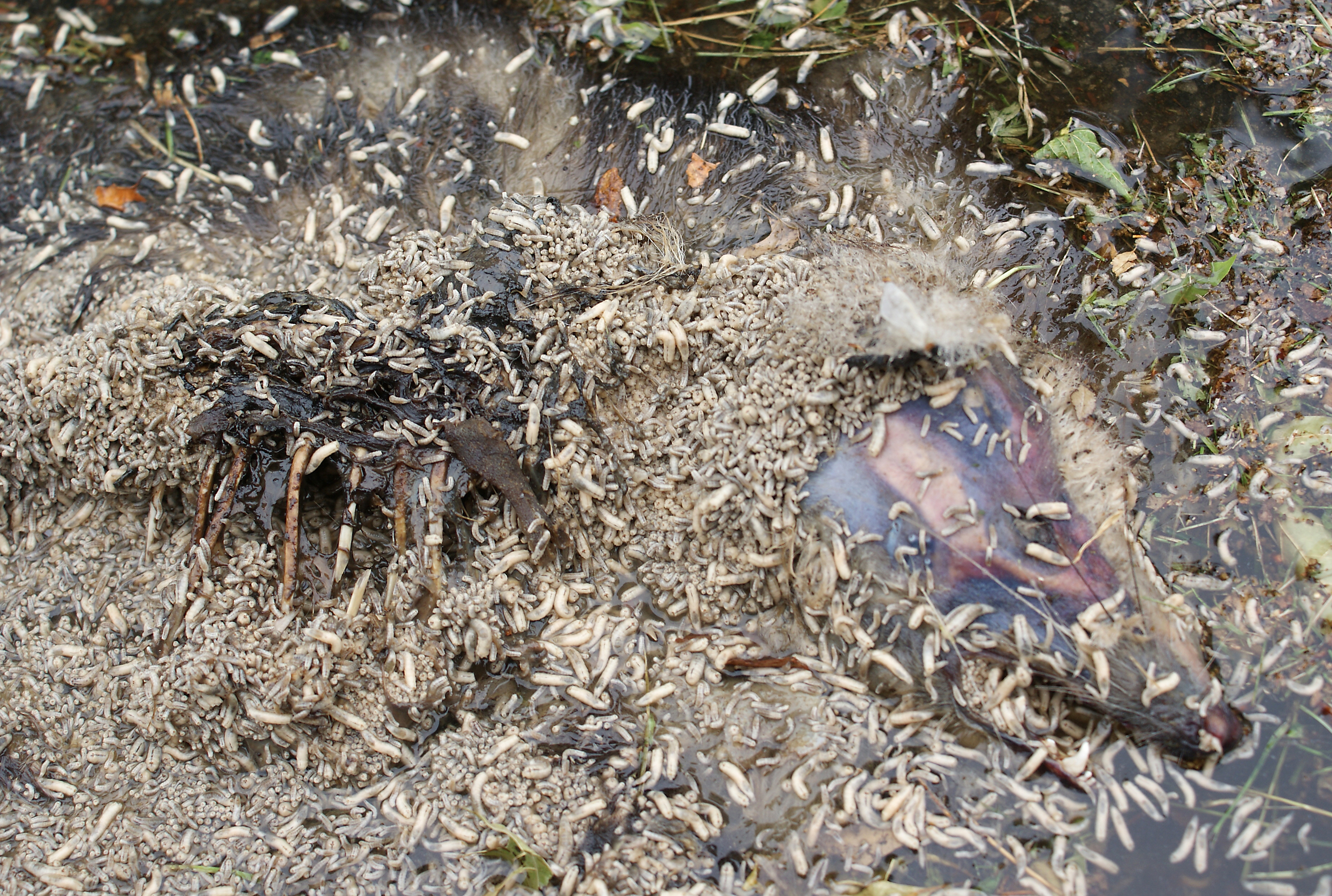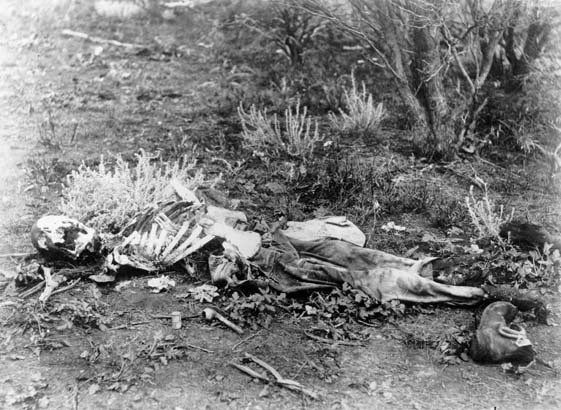|
Forensic Entomology And The Law
Forensic entomology deals with the collection of arthropodic evidence and its application, and through a series of tests and previously set of rules, general admissibility of said evidence is determined. Forensic entomology may come into play in a variety of legal cases, including crime scene investigation, abuse and neglect cases, accidents, insect infestation, and food contamination. Scientific evidence The admissibility of forensic evidence is left up to the judgement of the court. To provide a strong basis of admissibility for the evidence, accurate documentation is essential so that there is no room for speculation as to the authenticity of the evidence. Given that admissibility is granted, expert witnesses may be called to a courtroom to either support or refute the conclusions that are derived from the evidence submitted. In order to determine what is and is not scientific evidence, a set of rules or parameters must be established for qualification. There are two basic pr ... [...More Info...] [...Related Items...] OR: [Wikipedia] [Google] [Baidu] |
Forensic Entomology
Forensic entomology is the scientific study of the colonization of a dead body by arthropods. This includes the study of insect types commonly associated with cadavers, their respective life cycles, their ecological presences in a given environment, as well as the changes in insect assemblage with the progression of decomposition. Insect succession patterns are identified based on the time a given species of insect spends in a given developmental stage, and how many generations have been produced since the insects introduction to a given food source. Insect development alongside environmental data such as temperature and vapor density, can be used to estimate the time since death, due to the fact that flying insects are attracted to a body immediately after death. The identification of postmortem interval to aid in death investigations is the primary scope of this scientific field. However, forensic entomology is not limited to homicides, it has also been used in cases of neglect ... [...More Info...] [...Related Items...] OR: [Wikipedia] [Google] [Baidu] |
Karla Homolka
Karla Leanne Homolka (born May 4, 1970), also known as Karla Leanne Teale, Leanne Teale, and Leanne Bordelais, is a Canadian serial killer who acted as an accomplice to her husband, Paul Bernardo, taking active part in the actual rapes and murders of at least three minors in Ontarioincluding her own sister, Tammy Homolkabetween 1990 and 1992. Homolka attracted worldwide media attention when a controversial plea bargain with Ontario prosecutors meant she was only convicted of manslaughter, and served only twelve years for the torture, rapes and murders of two teenaged girls, Leslie Mahaffy and Kristen French. Homolka testified against Bernardo, who was convicted of the Mahaffy–French murders and received life imprisonment and a dangerous offender designation. Homolka stated to investigators that she had been an unwilling accomplice in Bernardo's murders as a result of domestic violence, resulting in a deal made with prosecutors for a reduced prison sentence in exchange for a ... [...More Info...] [...Related Items...] OR: [Wikipedia] [Google] [Baidu] |
Crime Scene Investigation
Crime scene investigation may refer to: * Forensic inspection of a crime scene * ''CSI: Crime Scene Investigation'' (2000-2015), a US television series * ''CSI: Crime Scene Investigation'' (video game), a 2003 videogame based on the TV show * ''CSI'' (franchise), aka ''Crime Scene Investigation''; a US TV franchise, including CSI (2000-2015) See also * Crime scene investigator Forensic science, also known as criminalistics, is the application of science to criminal and civil laws, mainly—on the criminal side—during criminal investigation, as governed by the legal standards of admissible evidence and criminal p ... * CSI (other) {{Disambig ... [...More Info...] [...Related Items...] OR: [Wikipedia] [Google] [Baidu] |
Use Of DNA In Forensic Entomology
Forensic entomology has three sub-fields: urban, stored product and medico-criminal entomologies. This article focuses on medico-criminal entomology and how DNA is analyzed with various blood-feeding insects. Forensic entomology can be an important aspect for law enforcement. With the magnitude of information that can be gathered, investigators can more accurately determine time of death, location, how long a body has been in a specific area, if it has been moved, and other important factors. Blood meal extraction To extract a blood meal from the abdomen of an insect to isolate and analyze DNA, the insect must first be killed by placing it in 96% ethanol. The killed insect can be stored at -20 °C until analysis. When it is time for analysis, the DNA must then be extracted by dissecting the posterior end of the abdomen and collecting 25 mg of tissue. The cut in the abdomen should be made with a razor blade as close to the posterior as possible to avoid the stomach. ... [...More Info...] [...Related Items...] OR: [Wikipedia] [Google] [Baidu] |
Branch Davidians
The Branch Davidians (or the General Association of Branch Davidian Seventh-day Adventists) were an apocalyptic new religious movement founded in 1955 by Benjamin Roden. They regard themselves as a continuation of the General Association of Davidian Seventh-Day Adventists, established by Victor Houteff in 1935. Houteff, a Bulgarian immigrant and a Seventh-day Adventist, wrote a series of tracts entitled the "Shepherd's Rod", which called for the reform of the Seventh-day Adventist Church. After his ideas were rejected by Adventist leaders, Houteff and his followers formed the group that later became known as "Davidians" and some of them moved onto a tract of land on the western outskirts of Waco, Texas, United States, where they built a community called the Mount Carmel Center, which served as the headquarters for the movement. After Houteff's death in 1955, his wife Florence took control of the Davidian organization. That same year, Roden (a follower of Houteff), proclaimed ... [...More Info...] [...Related Items...] OR: [Wikipedia] [Google] [Baidu] |
David Koresh
David Koresh (; born Vernon Wayne Howell; August 17, 1959 – April 19, 1993) was an American cult leader who played a central role in the Waco siege of 1993. As the head of the Branch Davidians, a religious sect and offshoot of the Davidian Seventh-day Adventists, Koresh claimed to be its final prophet. His Apocalypticism, apocalyptic Biblical teachings, including interpretations of the Book of Revelation and the Seven Seals, attracted various followers. Coming from a dysfunctional family, dysfunctional background, Koresh was a member and later a leader of the Branch Davidians, a movement originally led by Benjamin Roden, based at the Mount Carmel Center outside Waco, Texas, Waco, Texas. Here, Koresh competed for dominance with another leader, Benjamin Roden's son George Roden, George, until Koresh and his followers took over Mount Carmel in 1987. In the early 1990s, he became subject to allegations about Polygamy#Religion, polygamy and child sexual abuse by former Branch Davidi ... [...More Info...] [...Related Items...] OR: [Wikipedia] [Google] [Baidu] |
Steven Truscott
Steven Murray Truscott (born January 18, 1945) is a Canadians, Canadian man who was wrongly convicted and sentenced to death in 1959 for the rape and murder of classmate Lynne Harper. Truscott had been the last known person to see her alive. He was scheduled to be hanged; however, the federal cabinet reprieved him and he was sentenced to life in prison and released on parole in 1969. Five decades later, in 2007, his conviction was overturned on the basis that key forensic evidence was weaker than had been portrayed at trial. He was the youngest person in Canada to face execution. Lynne Harper Cheryl Lynne Harper was born to Leslie and Shirley Harper on August 31, 1946 in New Brunswick. She had one older brother, Barry Harper, who lived in Ohio and a younger brother, Jeffrey. Her father was a school teacher before he joined the military in 1940. They relocated to the RCAF base at Clinton in July, 1957. Lynne spent time going to Sunday school, Bible class and Girl Guides. On June ... [...More Info...] [...Related Items...] OR: [Wikipedia] [Google] [Baidu] |
Michigan State University
Michigan State University (Michigan State, MSU) is a public university, public Land-grant university, land-grant research university in East Lansing, Michigan. It was founded in 1855 as the Agricultural College of the State of Michigan, the first of its kind in the United States. It is considered a Public Ivy, or a public institution which offers an academic experience similar to that of an Ivy League university. After the introduction of the Morrill Land-Grant Acts, Morrill Act in 1862, the state designated the college a land-grant institution in 1863, making it the first of the land-grant colleges in the United States. The college became coeducational in 1870. In 1955, the state officially made the college a university, and the current name, Michigan State University, was adopted in 1964. Today, Michigan State has the largest undergraduate enrollment among Michigan's colleges and universities and approximately 634,300 living alums worldwide. The university is a member of the ... [...More Info...] [...Related Items...] OR: [Wikipedia] [Google] [Baidu] |
Phormia Regina
''Phormia regina'', the black blow fly, belongs to the blow fly family Calliphoridae and was first described by Johann Wilhelm Meigen. The black blow fly's wings are specialized with a sharp bend. These flies are also have well-developed calypters. Blow flies generally are about the size of a house fly or a little larger, and many are metallic blue or green in color. Key characteristics of this species include black gena, mostly white calypters, and anterior thoracic spiracles that appear to be orange yellow due to being surrounded by bright orange setae. ''P. regina'' is especially important to forensic entomology. Female ''P. regina'', like other blow flies in the family Calliphoridae, oviposit their eggs on carrion, where they hatch. The larvae develop through three instar stages until pupation. Adult black blow flies aggregate on feces in order to mate. The success of these mating interactions has been studied appears related to size and diet of the adult flies. Following s ... [...More Info...] [...Related Items...] OR: [Wikipedia] [Google] [Baidu] |
Canada
Canada is a country in North America. Its ten provinces and three territories extend from the Atlantic Ocean to the Pacific Ocean and northward into the Arctic Ocean, covering over , making it the world's second-largest country by total area. Its southern and western border with the United States, stretching , is the world's longest binational land border. Canada's capital is Ottawa, and its three largest metropolitan areas are Toronto, Montreal, and Vancouver. Indigenous peoples have continuously inhabited what is now Canada for thousands of years. Beginning in the 16th century, British and French expeditions explored and later settled along the Atlantic coast. As a consequence of various armed conflicts, France ceded nearly all of its colonies in North America in 1763. In 1867, with the union of three British North American colonies through Confederation, Canada was formed as a federal dominion of four provinces. This began an accretion of provinces an ... [...More Info...] [...Related Items...] OR: [Wikipedia] [Google] [Baidu] |
Forensic Anthropology
Forensic anthropology is the application of the anatomical science of anthropology and its various subfields, including forensic archaeology and forensic taphonomy, in a legal setting. A forensic anthropologist can assist in the identification of deceased individuals whose remains are decomposed, burned, mutilated or otherwise unrecognizable, as might happen in a plane crash. Forensic anthropologists are also instrumental in the investigation and documentation of genocide and mass graves. Along with forensic pathologists, forensic dentists, and homicide investigators, forensic anthropologists commonly testify in court as expert witnesses. Using physical markers present on a skeleton, a forensic anthropologist can potentially determine a person's age, sex, stature, and race. In addition to identifying physical characteristics of the individual, forensic anthropologists can use skeletal abnormalities to potentially determine cause of death, past trauma such as broken bones or me ... [...More Info...] [...Related Items...] OR: [Wikipedia] [Google] [Baidu] |





